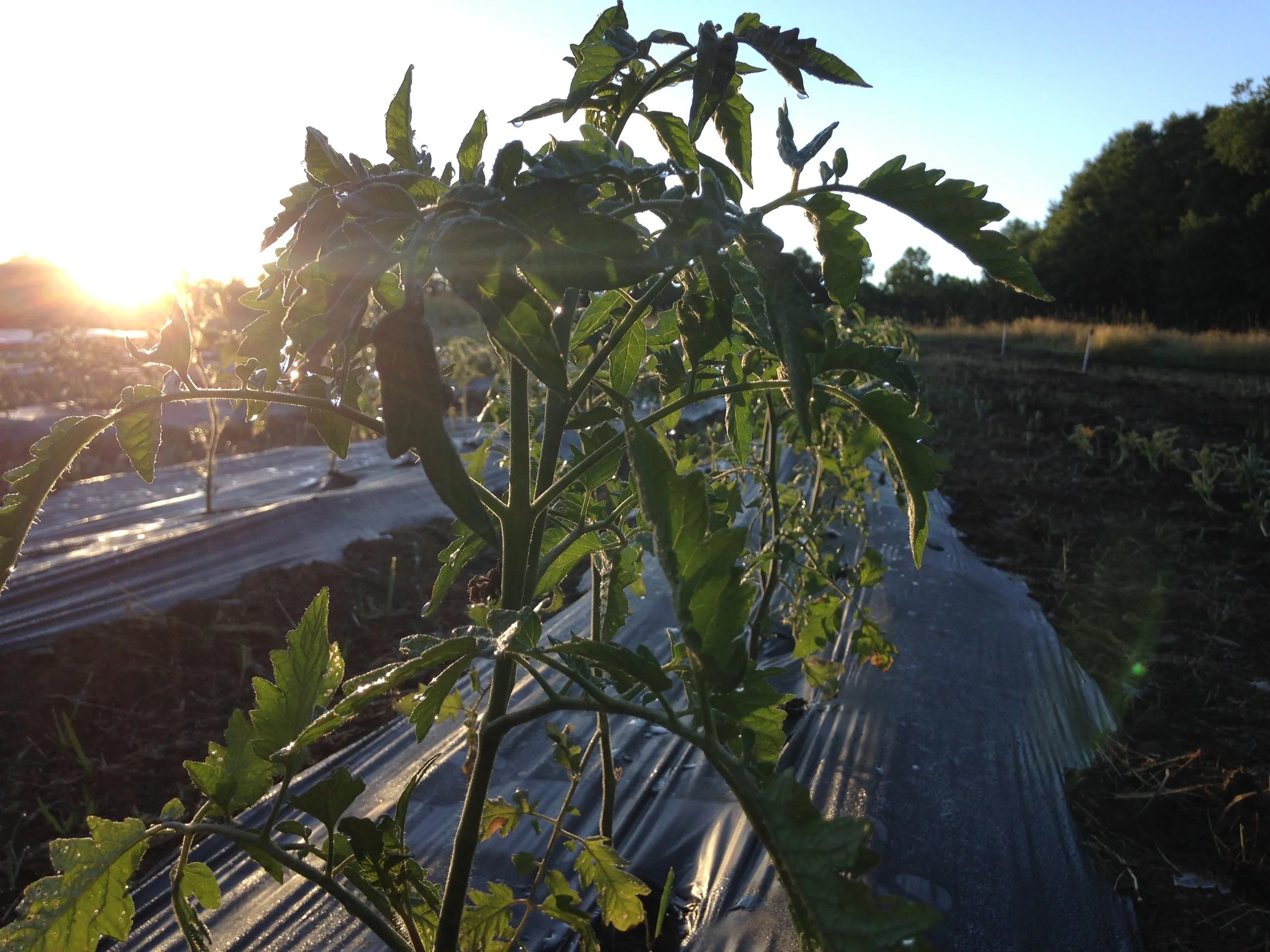Previously, the farm’s direct seeding, rather than transplanting, didn’t boast a great success rate. By “the farm’s,” I actually mean Jason’s. And I’m not saying that to throw him under the bus. Farming, we’ve come to learn, means spending a considerable amount of time solving one problem or another. And when it comes to problems on the farm, Jason’s the one who typically does the legwork to figure them out.
So it went with the germination. He tested hypotheses (old seed, bad seed, too little water), but the subpar germination issue persisted. After awhile, he suspected the water system. So let me quickly walk you through how we water. Pond water is ushered up a big hill via buried, 1-inch line. It’s pushed up by a submersible pump with electric power. When the water reaches the gardens, it travels to the beds through 1/2-inch lines. These are connected to Senninger Xcel-Wobblers that sit atop waist-high plastic stakes. For a 125-foot bed, we use five wobblers, and provided a spider hasn’t turned a sprinkler head into its own personal high rise, the wobblers work well.
However, this system was only throwing water on about four beds at a time, and since we didn’t immediately have a limitless supply of sprinklers (on a budget here, folks), this meant constantly moving water lines. To move a water line, we take the wobblers off the stakes, pound the stakes in where we need them, and reattach the wobblers. We also drag the water line to its new location. The process is a nuisance, so we accumulated more wobblers over time, but the system was still inefficient. We knew the wobblers weren’t at fault. And despite the water’s uphill climb, the water pressure seemed fine, too.
After some tinkering with the pump filter, Jason got the wobblers to throw water over up to six beds. Still, the germination problem persisted.
Then, Jason installed 1-inch lines in all the high tunnels. As soon as he put those in, he noticed drastically improved germination in the tunnels. Seeds germinated faster and uniformly.
When he emailed Dubois Agrinovation in Québec, his suspicions were confirmed by a “conseiller en irrigation.” Actually, I could have skipped this entire post, and just reprinted the guy’s email. “If you have 5 Xcel wobbler on line. Need 1’ pipe.”
So Jason began the conversion process, swapping out the 1/2-inch line with 1-inch line everywhere on the farm. We went from throwing water on four to six beds, to throwing water over six to eight beds. But the most important thing is that more gallons per minute are being hurled on the beds.
The best example of this new success is radish germination. With the bigger water line, radish seeds germinated and stood three-quarters of an inch tall within three days, and popped up in uniform lines. It seems like this is one problem Jason can check off his list.
Jason first noticed the improved germination in the Big Tunnel, which had new 1-inch water line. In this photo, there are radishes on both sides of cucumber plants. Within three days, these radish seeds were already three-quarters of an inch tall.
~ Stella

